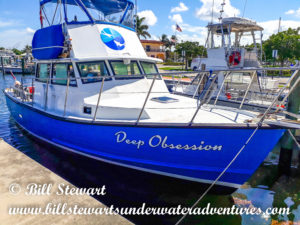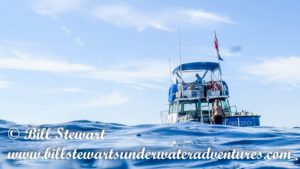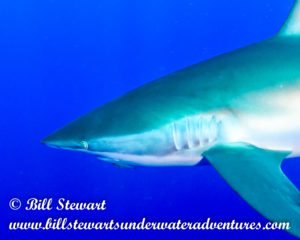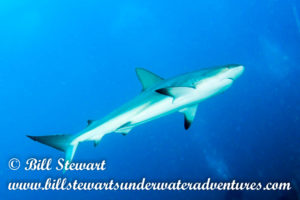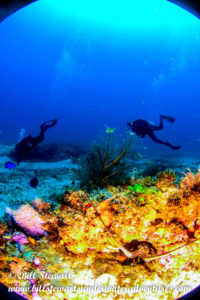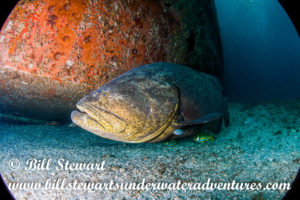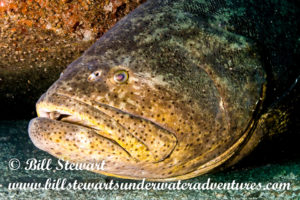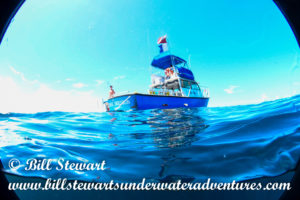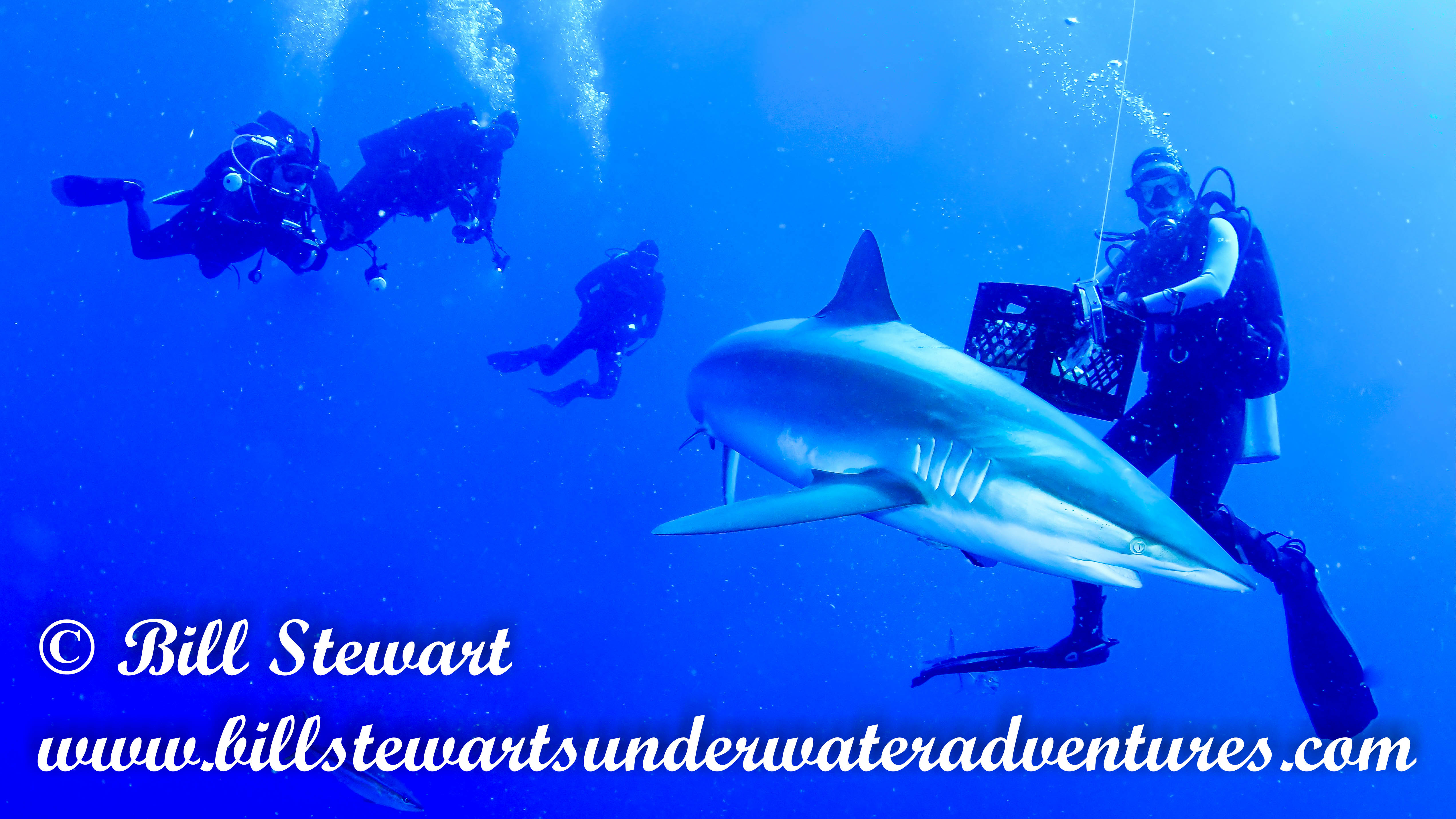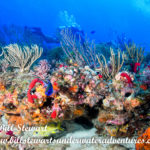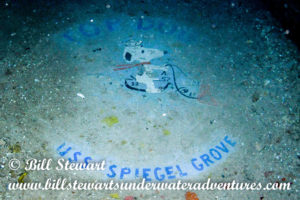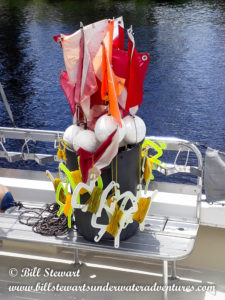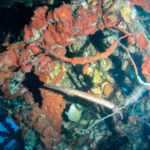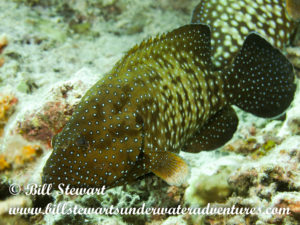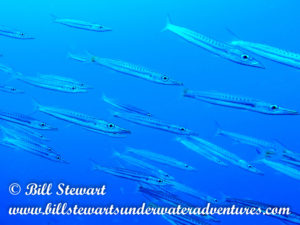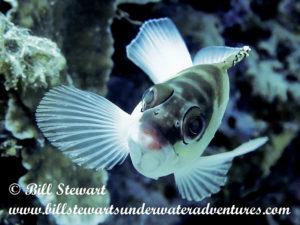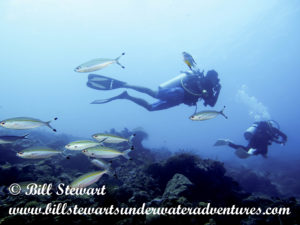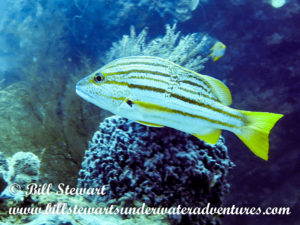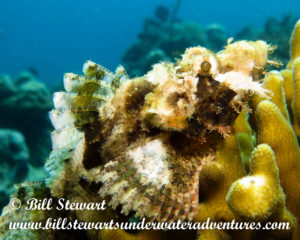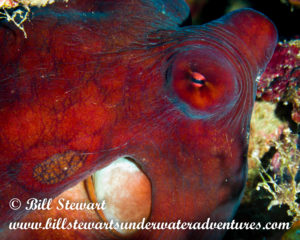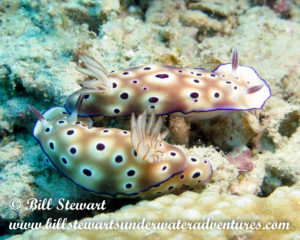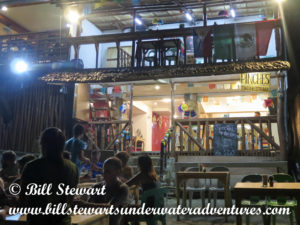Chuuk has been on my list (as it probably has for many scuba divers) for a long time! On May 30th (yes I know I’m 2 months behind now 🙂 ) I was very close to going on a trip to Malaysia. I was just waiting for a response from a resort there when I happened to notice a post on Micronesia Divers Association’s Facebook page. It was for 5 nights and 5 days of diving aboard SS Thorfinn in Chuuk for only $1997, including airfare from Guam and free nitrox!
It sounded to good to be true! I fired off an email and had a response from Matt at MDA less than an hour later. I immediately decided to book. It was just too good a deal to pass up! On June 3rd I flew to Guam from Manila.
Anyone traveling to Chuuk from the US will almost certainly fly through Guam and a few days there to recover from jet lag is not necessarily a bad idea! I’ll talk a bit about Guam then to start off. I’ll describe the trip there and I’m also going to give some historical background on Chuuk. There will be information on Operation Hailstone, the military operation launched by the United States during WW II that essentially removed Chuuk as a military threat for the remainder of the war. I’ll give you a rundown on Thorfinn and then background on the wrecks that I dived that week. Then the return to the Philippines. I hope you will enjoy 🙂
On Saturday after I arrived and checked into my hotel, I went by MDA (Micronesia Dive Association). They’re located in Piti on Marine Corp Drive. The staff were very friendly and let me use a computer and printer to print out my itinerary and voucher for the trip. I’d not done that before leaving the Philippines as I don’t have a printer there. Everything had happened so fast that I hadn’t had time to go somewhere to do it. They also recommended Mosa’s for dinner which turned out to be a great place!
It was Saturday night and Mosa’s was packed when I got there! I think that in itself says something about the popularity of the place! Mosa’s is in Hagatna (one of the villages in Guam) on a street that parallels Marine Corps Drive (the “main” drag in Guam). It would be easy to miss if you didn’t know where to look. The staff were friendly. Food was great and they had craft beer which was really good too. A bit more than I’m used to paying, but I found that was true of a lot of places in Guam during my visit. After all Guam is an island in the Pacific and a lot of things are brought in from outside.
On Sunday morning I had breakfast at the Kracked Egg in Tumon which is the main tourist area. The food was great but unfortunately I can’t say the same for the service. I wasn’t greeted when I came in. I got a table and a menu and sat down. A couple of waitresses walked by but no one offered to take my order or expressed they would be with me. There were empty tables and most of the people already seemed to have their food so I don’t get why no one approached me. Finally I got up and went to the counter and asked if I were supposed to order there and was told no and a waitress finally came and took my order. When I was ready for a refill on my coffee I had to go and get it myself. Same when I was ready to check out. The food was decent. I had the corned beef brisket and eggs and the coffee was also excellent, but $11.95 for breakfast and $2.75 for coffee seems a bit steep even in a tourist area. Coupled with the terrible service I don’t think I’ll be going back! To add insult to injury they tacked on a “service” charge!
Later I went by GMI Scuba Wholesale. There I met Jim Pinson who it turned out I had mutual friends with (small world). Jim is the Dive Rite dealer on Guam which is what brought me into his shop when I saw the sign. I had been thinking about upgrading to the deluxe harness on my Dive Rite aluminum backplate (I’d already upgraded the harness for my stainless steel plate). After some thought I ended up deciding to do that. I also needed hose clip retainers and bought 4 so I’d have a few extra. They work really well and were impossible to find in the Philippines. Jim is a really friendly guy and we spent some time talking about Guam and other dive destinations in Micronesia.
The rest of the day I cruised around in my rental car getting a feel for the place. I found that prices were a bit higher than what I normally pay back home and significantly higher than what I’ve paid during my stay in the Philippines! I drove to the Navy Base, stopping at Navy Federal Credit Union and used the ATM before going in. I walked around the exchange (a department store on base for all the civilians reading this) and checked out prices. Very similar to the US. I filled my gas tank before leaving the base as fuel on base is close to a dollar a gallon cheaper! Still significantly higher than on the mainland but every little bit helps! I opted for McDonalds for dinner.
I was up early on Monday morning, the 5th of June. I had installed the new harness on my back plate the night before and re-packed everything. Of course my batteries were all fully charged in preparation of diving that day! I was checked out by 6 AM. I stopped at McDonalds again for breakfast, although in hindsight I should have just eaten at the airport. Check in was a quick process as I dropped my bag since I’d already checked in online. I had my boarding pass on my smart phone. A bit of a line getting through security but it went relatively quickly.
I’d been sent an email by Matt telling me that Eric McClure would be leading the trip. It wasn’t hard to figure out who he was as he was wearing an MDA shirt with his name on it! I picked the group out of the crowd just based on how they were interacting as they obviously all knew each other. Eric and Greg Snell who I would meet later were walking together hand carrying their cameras in the housing. After passing through security I walked up behind them and as they were getting ready to turn in to the United Lounge, jokingly said, “Nice rig’s, but to high dollar for me”! They both laughed and said they’d managed to get a deal on used equipment. I laughed too as I completely understood! It helped that it was a short flight too! I continued on to the gate. I could have introduced myself at that point, but I decided it might be funny to wait until later 🙂
I had wondered if we would all be sitting together but this turned out not to be the case. We were spread out on the plane. The plane started boarding at 7:40 AM and we took off around 8:20 arriving in Chuuk around 10:10 AM… just under 2 hours. Immigration was pretty routine. I got my passport stamped and then moved on to claim my luggage. Everything was done by hand… to small for a carousel! The bags were unloaded on the other side of a curtain and pushed through. When my bag showed up I grabbed it and made my way through the crowd. My claim ticket was checked to insure I had my own bag and I was waved through.
Chuuk is located only 7 degrees above the equator a 1000 miles northeast of New Guinea and 3300 miles southwest of Hawaii. Chuuk is made up of dozens of islands, but only seven of them have any significant population. The larger islands possess volcanic peaks, the tallest being nearly 1500 feet. The barrier reef is roughly triangular in shape and a 140 miles around. Within that is a huge deep water lagoon more than 800 square miles in area. Sitting just above the equator with lots of sunshine and rainfall, the average year round temperature is 81 degrees Fahrenheit making it green and lush. Water temperatures during our week there were in the low to mid 80’s. Visibility in the lagoon is normally 50 feet or better and can be much more. Even without the wrecks, Chuuk would be a divers paradise!
On the sidewalk outside the terminal I saw a local holding a sign with “Thorfinn” on it. I walked up and said hi and introduced myself. This turned out to be the driver who’s name was Tun. It started raining about this point. We waited a few minutes and when the rain slowed he walked out to get the vehicle. By the time he pulled it around it had stopped raining. He took my bags and I piled into the van to wait for the rest of the group who all showed up after me.
We introduced ourselves all around. Eric, who I mentioned earlier, is retired US Air Force and the Instructor Coordinator and PADI Course Director at MDA. Then there was Greg Snell who is a radiographer working with non-destructive testing on aircraft in Guam. When he saw me he exclaimed, “Oh you’re with us”! He’s also part-time PADI MSDT. I’d seen him earlier with Eric. He and Eric were the ones walking together. I don’t blame them for hand carrying their camera rigs. Expensive gear like that I can understand wanting to keep under your exclusive control, not to mention keeping it from adding to your baggage allowance! Jason Cunningham, is a US Navy Warrant Officer stationed on the Navy Base in Guam. Jason too, is a part time PADI MSDT. He’s also a NAUI instructor who had extensive experience in the Pacific Northwest before transferring to Guam. Last and certainly not least was Marcin Czerniakow who told us to just call him “C”. After finding out his last name I understand why! He’s a doctor at Guam Memorial and also it turned out, a dive instructor, though not actively teaching.
We were driven to Blue Lagoon Resort to meet the boat that would take us out to the SS Thorfinn. We were there a little after 11 AM. Along the way Eric, who has made many trips to Chuuk over the years kept up a running commentary on what we were passing and the history of Chuuk over the years that he had been coming there. At the resort we met Kjartan “KJ” Ohmsen, a PADI Instructor and Photographer from Denmark, and Alessandro “Alex” Barlettani, who is a PADI IDC Staff Instructor from Italy. A boat was waiting and we were whisked out to the SS Thorfinn. It was a bit overcast and looked like rain, but things like that have never bothered me. “It doesn’t rain underwater” I like to say and plenty of people have heard me say it over the years!
When we arrived on the Thorfinn we were met by Captain Lance Higgs. Having been there since the 70’s he has seen it all. The SS Thorfinn pioneered the liveaboard industry in Chuuk! Obviously he has plenty of stories to tell!
We all met in the lounge and Lance gave a fascinating talk on the history surrounding Operation Hailstone, the American attack on Chuuk that some called “payback for Pearl Harbor”. During WW I Japan invaded and occupied the Caroline Islands (which Chuuk is a part of geographically). At that time they were administered by Germany who had purchased the Caroline and Marshall Islands from the United States who had acquired them at the conclusion of the Spanish-American War. In 1920 after the war ended, Japan received a mandate from the League of Nations (precursor to the United Nations) over the Caroline and Marshall Islands. Prior to and during WW II, Japan built Chuuk into a formidable base. Although their agreement with the League of Nations stipulated that there was to be no military buildup there, they ignored that. They also settled Japanese colonists throughout their holdings in Micronesia. By the time the war started there were over a 100,000 Japanese in Chuuk with only 50,000 native islanders. Chuuk had become a major logistical and operations base and the home port for the Japanese Imperial Navy’s Combined Fleet.
The islands surrounding Chuuk Lagoon were heavily fortified with a Japanese garrison consisting of 27,856 Imperial Japanese Navy sailors and 16,737 Imperial Japanese Army troops at the time of Operation Hailstone. The Allied Forces called Chuuk the “Gibraltar of the Pacific”. The Japanese had built roads, trenches, and bunkers. They had fortified caves and mounted coastal defense guns and mortar emplacements. They had also built five airstrips, seaplane bases, a radar station and a communications center. Additionally they built a torpedo boat station and submarine repair shops. Chuuk performed the same function for the Imperial Japanese Navy that Pearl Harbor had done for the United States Navy.
Operation Hailstone took place over two days, February 16-17, 1944. After the fall of the Marshall Islands, the Japanese had begun moving their warships, with carriers and battleships going to Palau only the week before Operation Hailstone. There were still plenty of targets left though! By the time the attack was over 3 Japanese light cruisers, 3 auxiliary cruisers, 4 destroyers, 2 submarine chasers and a aircraft transport ship had been sunk, along with a large number of merchant ships. All were sunk either within the lagoon or while trying to escape. On the first day American Hellcat fighter pilots had shot a 124 Japanese planes out of the sky and a similar number had been destroyed on the ground. Many of these ships were fully loaded with supplies and troops to support and reinforce garrisons around the Central Pacific. Officially 47 Japanese ships were sunk, 270 aircraft destroyed, and over 4500 killed. On the US side there was a loss of 25 aircraft and 40 killed. The Japanese later relocated a 100 aircraft from Rabaul to Chuuk. US Navy carrier forces carried out a second attack April 29-30, 1944 destroying most of those aircraft. At the time of that attack they found no shipping in Chuuk Lagoon. This would be the last major attack on Chuuk of the war, although later B-29’s would bomb Chuuk as practice before launching raids on Tokyo from the Marianas.
Today, Chuuk Lagoon has the largest concentration of wrecks in the world! Which is why so many divers, including me, dream about diving there. Now my dream was about to be realized. I was ready!
Safety is important. As part of the brief Lance also talked about additional safety stops. He touched on some of the research that has been done about deep stops. Policy on the Thorfinn was a 2 minute stop at 60 feet, 3 minutes at 30 feet and 10 minutes at 15 feet plus any additional deco (Unlikely). This was for safety reasons as many of the wrecks are quite deep. 3 of the 21 dives I would make during the week were beyond recreational depths of 130 feet. 10 of the 21 were over a 100 feet so lot’s of deep diving! With a schedule that gave us 5 dives a day on 3 of those days, a little “extra” seemed a reasonable precaution. There is a decompression chamber in Chuuk, but who wants to use it if they don’t have too?
We were allowed to do our own dive but no solo penetrations was the rule. With the exception of the morning dive which was usually the deep dive and would be on air, we were all diving nitrox. The guides were always on air so they might come up before the other members of the group.
Captain Higgs has been coming to Chuuk since the 70’s. He has an incredible depth of knowledge about not just the history of Operation Hailstone, but the history of the individual ships that were sunk there. Each of the dive briefs would take at least 15 minutes. He would give the history of the ship, what it’s purpose was and how it came to be in Chuuk. He would talk about the crew and cargo and how the ship was sunk and how it was lying on the bottom. He would tell us about interesting things to look for and if a penetration was advisable or not. Some penetrations are no longer safe due to deterioration of the wrecks. Being a history buff I found his dive briefs to be fascinating. I said to him several times during the week we were there that he should write a book!
Let me talk a bit about the ship. The SS Thorfinn was built in 1954 and was originally a Norwegian whaling ship operating through the 50’s and 60’s. After that it was utilized as a tug boat. In 1977 it was converted to a Utility/Charter cruiser. It has a capacity for 20 guests. She’s a 170 feet long, 30 feet on the beam, and a draft of 17 feet. She has a cruising range of 9000 nautical miles at 11 knots with a top speed of 16 knots.
The Thorfinn is an older ship and it’s been 12 years since the last time it was renovated so adjust your expectations. If luxury is what you’re looking for, then the Thorfinn is not for you. That would be the Odyssey… but you will pay for that of course! The Thorfinn is very much about the diving (and isn’t that what we go there for?). I doubt any other operation in Chuuk can give you the sheer variety of diving that the Thorfinn can. In our case we dived 16 different wrecks in just 4 1/2 dive days with 2 aircraft wrecks thrown in! Now that’s what I’m talking about! The rooms are comfortable enough and the truth is you spend very little time in them.
Every morning about 6:30 AM some type of pastry or sweet would be put out in the lounge and the coffee pot was always ready! At 7 we would go for breakfast where we would order from a menu. Lunch and dinner was always set but the variety was good. Chuuk is very isolated so again that is something to remember. I really enjoyed the food while I was there. When we would come back after the afternoon dive (dive #3) there would always be a snack for us (really good spring rolls!)
Given the overall expense of diving there (from the US you can easily spend $2K on airfare) they may or not be at full capacity. During the time we were onboard there were only the 5 of us plus one more! (I think a combination of luck and timing) The other guest was Trevor who was taking a break before starting law school. He was there for a month! He was doing his Advanced Open Water, Rescue Diver, Deep, Wreck, and Nitrox specialties. Talk about a “working” vacation!
The Thorfinn having been built for Arctic (and Antarctic) conditions is a tank! After Typhoon Maysak plowed through in 2015, only the Thorfinn was still fully operational (although it did sustain some damage of course). Both the Odyssey and the Siren were driven up on the reef while the Thorfinn rode it out.
Once he finished his general brief of the ship, safety rules, and history he asked us about what wrecks we wanted to dive. The Captain of course had final say based on conditions, but he was very open to us diving wherever we wanted. Eric had been to Chuuk many times and the rest of the group deferred to his advice and the Captains.
In five dive days I would end up with 21 dives. I dived the following wrecks below. Unless otherwise stated, they were all sunk during Operation Hailstone.
Heian Maru-Launched in 1930. Former ocean liner on the Yokohama to Seattle run. On her maiden voyage she set a trans-Pacific speed record. Requisitioned by the Imperial Japanese Navy (IJN) and converted to a auxiliary submarine tender. The largest wreck in Chuuk Lagoon she lies on her port side in a 110 feet of water. The shallow side of the wreck is only 40 feet. I went 70 feet during this dive which was the first dive on the first day.
Fujikawa Maru-We dived this wreck 3 times, 2 day dives and a night dive. Cargo ship built in 1938. Requisitioned in 1940 by the IJN and converted to an armed aircraft transport. One of the coolest wrecks we dived and considered by some to be one of the best wreck dives in the world. There are 4 disassembled Mitsubishi aircraft in one of the forward holds and a 6 inch bow gun. She sits on an even keel in 110 feet of water. The deck is at 60 feet and the superstructure is only 30 feet beneath the surface. I went to 91 feet on my first dive there (2nd dive of the trip) and 76 feet that same night during a night dive. I really enjoyed this dive. The ship has lots of coral, anemones, and marine life. Very nice! When deciding where to dive on our last dive day we chose to dive this wreck a third time! Coincidentally I also went 91 feet on the last dive also.
Nippo Maru-A passenger/cargo ship, she was launched in 1936. She was requisitioned in 1941 and fitted out with water tanks. The Nippo Maru was used to haul water and munitions. It’s holds were packed with munitions, weapons, gas masks, trucks, and a tank on deck! One of the deeper dives I made. It sits in a 155 feet of water. The superstructure is reached at 90 feet and the deck at a 120 feet. I went a 139 feet on this dive. The Nippo was our morning “deep” dive on the second day we were there. We did a blue-water descent with the superstructure not coming into view until we were about 40 feet. Something we did more than once during our 5 days of diving.
Yamagiri Maru-Passenger/cargo carrier launched in 1939. Requisitioned by the IJN and converted into a military transport ship. In hold number 5 are armor-piercing shells, that were destined for the battleships Yamato and Musashi. Their 18″ guns were the largest ever made (American battleships had 16″ guns). The ship is sitting in a 120 feet of water with parts of it at 60 feet. I went a 105 feet during this dive. This was the second dive on the second day.
Kikukawa Maru-Launched in December 1938. It was used as a passenger/cargo ship prior to the war. This ship was not sunk due to Operation Hailstone. On 7 October 1943 it was being unloaded when a fire broke out. The cargo in the rear hold was primarily munitions and there may have been fuel drums as well. Other ships came alongside to help fight the fire and were pouring water into the holds when an explosion tore off the rear third of the ship. It basically evaporated along with the Ojima which was there to help fight the fire. The remainder of the ship immediately sunk! It’s on a sloping bottom from 70-125 feet and is upside down. The forward holds contained airplane parts and more fuel drums. I hit a depth of a 117 feet here. It was the third dive on the second day.
IJN Futagami-The Futagami is a Imperial Japanese Navy salvage tug launched in 1939. The Futagami actually made it through the war but was abandoned, left anchored with no crew on board. It eventually sank. The stern is in 30 feet of water and the bow in a 100 feet lying with a 45 degree list to port. The engine room and bridge were both in great shape and we were able to do a penetration. I went 67 feet on this dive. This was the fourth dive on the second day.
Kiyosumi Maru-We did this wreck twice, a day and a night dive. It was our fifth dive on the second day (night dive) and then we would dive it again as the second dive on the 4th day. It was built in in 1934 with very luxurious passenger accommodations. As in many other ships of the day, it carried freight as well as passengers. It performed passenger service from the Orient to New York City The IJN took control of it in 1941 and it was converted into an armed, merchant raider. It’s on a slope resting on it’s port side with the bow in 70 feet of water. The deep end is at a 120 feet. The deck starts at 40 feet and slopes down. I went 75 feet on the first dive I made there and 102 feet on the second one.
San Francisco Maru-One of the most famous wrecks in Chuuk Lagoon. It is on many top 10 lists along with Fujikawa Maru for best shipwrecks in the world to dive on! It was built in 1919 and was originally coal powered, but was later converted to an oil fueled ship in 1922. Before being requisitioned by the IJN it was used in trade throughout the Pacific. During the war it was used to transport equipment and ammunition. It was sunk after being struck by six 500 lb bombs from aircraft from USS Essex. She’s sitting on an even keel in 210 feet of water. The deck is at a 165 feet and the superstructure at a 140 feet. This was our deepest dive of the trip. Another blue-water descent with the superstructure not coming into view until we were at 80 or 90 feet. Due to the depth I only got 12 minutes on this wreck, spending more time in deco than I did on the wreck, but it was worth it! I focused on the forward area of the ship visiting the bow gun and then getting some shots of a truck and a tank sitting on the deck. I briefly dropped over the side to take a photo of a damselfish and coral (2 shots that didn’t come out) and then went back up. My maximum depth was 173 feet. A personal record that is probably going to stand for a while! When I get the chance to go back I’d like to take a look in the cargo holds that are crammed with war materials. Everything from mines and torpedo body’s, to aircraft bombs, airplane engines, artillery shells. This was our first dive of the day on the third day.
Kansho Maru-Launched in 1938 and utilized for cargo and passengers before the IJN requisitioned her. She initially was put to work transporting supplies from Japan to the Marshall Islands. She was later retrofitted with a deck gun and gun crew and also had a medical staff added to help transport wounded. Great engine room and machine ship to explore. The floors on the bridge have given way and radio equipment has tumbled through into the Captains quarters below. Other than that the bridge is relatively intact. She rests at a 105 feet. My maximum depth was a 105 feet. It was the second dive on the third day.
Sankisan Maru-Prior to the war the ship was used to transport cargo (mainly rice). It was requisitioned by the Japanese Army to transport military personnel and supplies at the beginning of the war. The ship was blow apart with the midship superstructure being obliterated! The stern section ended up in deeper water about 200 feet away where it sits at 160 feet. The rest of the ship lies on an even keel in 90 feet of water. The deck is at 50 feet. There are trucks, ammunition, and aircraft parts in the cargo holds. This wreck is covered in really nice soft corals with plenty of fish life. My maximum depth on this dive was 73 feet. It was our third dive on the third day.
Shinkoku Maru-A tanker built in 1940, it was initially utilized in transporting oil from the United States (back when we were the largest exporter of oil in the world). She was requisitioned by the IJN and immediately put to work. She was part of the strike force that attacked Pearl Harbor. She rests on an even keel in 130 feet. The superstructure is at 40 feet and the deck at 70 feet. It’s covered in corals, both soft and hard, sponges, anemones, and schools of fish. It has a nice bridge with 3 telegraphs, and also an operating table in the superstructure with a number of artifacts (including human bones) that were placed there by other divers. A very nice dive. This was our fourth dive on the third day. My maximum depth was 87 feet.
Aikoko Maru-Designed to carry passengers and cargo, she was part of a secret mobilization plan and was immediately acquired by the IJN upon her completion August 31, 1941. She and her sister ships served as heavily armed raiders attacking shipping between Australia and South America. Later she joined German raiders in the Indian Ocean around Java in the same mission. She arrived at Chuuk shortly before Operation Hailstone transporting part of the Japanese Army’s First Amphibious Brigade. Reportedly 730 members of this brigade along with 11 ships crew were killed when she was sank. She rests on an even keel in 210 feet of water. The superstructure is at a 130 feet and the deck at a 160 feet. This was the second deepest dive of the week for me at 160 feet. Anti-aircraft guns are installed on top of the aft deckhouse. The stern gun is still pointed upwards. This was the first dive on our fourth day.
Unkai Maru-Was built in 1905 in Great Britain and is the oldest ship sunk in the lagoon. She was bought in 1911 by Nakamura Gumi Ltd. Her original name was “Venus”. She was requisitioned very late in the war in January 1944 and arrived in Chuuk the end of the month. She’s sitting upright on an even keel at a 130 feet. The deck is at 100 feet and the superstructure reaches up to 80 feet. Another wreck that is initially a blue-water descent. There is a bow gun, heavily encrusted with coral. There is also an engine room that is interesting as it is an older design. I went 114 feet on this dive going into the forward hold where there were old gas masks, china, bottles, and drinking flasks. This was the third dive on the fourth day. The second dive I talked about earlier was the Kiyosumi Maru which we also did on the second day.
Gosei Maru-Built in 1937 it was part of a class of coastal freighters designed for maximum cargo capacity. She’s lying on a steep slope on her port side, with her bow at 10 feet and her stern in 120 feet of water. The cargo was made up of torpedo body’s, shell’s and fuel drums. There was a period when it was not really safe to dive because of deteriorating explosives. Explosions have been reported by local’s going back to 1976-77. The most recent was almost 20 years ago in 1998. I went 76 feet on this dive. This was the fourth dive on the fourth day.
Hoki Maru-A captured New Zealand freighter built in 1921 in Scotland. Her original name was M/V Hauraki. Her engines were the latest 8 cylinder, 4 stroke diesels. She was the first of her kind to be driven by power instead of steam and had twin screws. She was used for trans-Pacific trade, mainly between New Zealand and Australia. She was requisitioned by the British Ministry of War Transport in 1940, but continued her regular route. She was captured in 1942. Her New Zealander crew sabotaged the engines and threw overboard all tools, spare parts, and blueprints of her unique engines. In January of 1944 after 18 months in Singapore having the engines overhauled she was re-commissioned as the Hoki Maru and sent to Chuuk. She arrived just in time to be sunk! She is the only captured ship that was sunk there. She’s sitting with a slight list to port on an even keel in a 168 feet of water (most references say 165 feet, but I touched the bottom ;)). The deck is at a 120 feet and the superstructure at 80 feet so yes, another blue-water descent. Lot’s of interesting cargo including, bulldozers, trucks, munitions, and bombs. This was our first dive of the day on our fifth and last day of diving.
“Jill” Bomber-In remarkable shape sitting in 84 feet of water like it had just come in for a landing! The history of this particular plane is unknown but we can narrow it down a bit. The Nakajima B6N Tenzan (designated “Jill” by Allied forces) was a torpedo bomber that could land and take off from aircraft carriers. They were the latest design and began reaching front-line units in August 1943. They were intended to eventually replace all the B5N aircraft that were operating from the carriers of the 3rd Fleet based in Chuuk. Maximum depth was 84 feet. This was the 3rd dive on our fifth day of diving. (second dive was Fujikawa Maru).
Zero-Interesting but I’m not sure it should be classified as a dive! The Mitsubishi A6M Zero was introduced at the beginning of the war it was considered the most capable long range fighter in the world! It’s maneuverability was legendary and early in the war it achieved a 12:1 kill ratio! This was quickly overcome though by a combination of advances in aircraft and tactics and by mid-1942 it was more or less even. The Zero was in very shallow water, flipped upside down and almost completely encrusted in coral! We stopped here on the way back after our 3rd dive and myself and Greg, who is an aircraft buff jumped in to take some photo’s. Maximum depth was 29 feet and we were climbing back on the boat after a 12 minute underwater… I suppose “technically” it’s a dive, but I doubt I’ve ever done one that short! It was still interesting nonetheless!
Rio de Janeiro Maru-When built in 1930 the Rio de Janeiro Maru was a passenger liner with 8 decks. It could carry 1,140 passengers along with a crew of 150. She was requisitioned in 1940 by the IJN and converted to a sub-tender. In 1943 she was re-converted into a transport ship, moving military supplies and personnel. The ship is resting on it’s starboard side in a 110 feet of water. The superstructure is between 40 and 80 feet down. She has a large stern gun and large propellers (the group posed for a photo with the propeller taken by KJ). There was were many crates of beer. There is an engine room and long passageways that can be penetrated. At the bow you can see where internal explosions took place as it’s blown out in several places. My maximum depth was a 110 feet. This was the last dive on our last dive day.
I ended up diving on sixteen different shipwrecks and two airplane wrecks in 4 1/2 days of diving. Does it get any better?!?! This is one of the advantages of the Thorfinn. Since the ship anchors in a strategic location and then dives from small boats there is the opportunity to dive a greater variety of wrecks. We could, and did, dive on five different wrecks in a single day!
After the last dive on Friday, June 7th we washed our gear and sat it out to dry. I started pulling my things together in preparation to leave. That night we had a barbecue on deck. It was a good time as we decompressed and talked about the week. A couple of the girls from the staff who took care of us all week put on a show with some native costumes and dance. The food was good, the company was great, and we had native girls dancing for us… what more could one ask? 🙂 The party was over early. Nothing like diving 4-5 times a day to make you sleep well!
The next morning I slept in a bit, not getting up until 7 AM. I’d been getting up at 6:30 all week. After breakfast I checked on my gear. We had plenty of time as the flight wasn’t until 4:20 PM. My gear was still drying, although diving in a synthetic (4th Element Thermocline) farmer john with a rash guard, does cut down on not just weight, but drying time too! I finished packing my dive bag just before lunch. After lunch the crew loaded our bags in the boat and we were taken back to Weno where a van picked us up and took us to the airport.
KJ went along for the ride and we chatted a bit. He was very interested in the Philippines and thought it might be a place he’d like to check out. I got his information and we’re friends on Facebook now and have been in touch since.
Check-in with United Airlines went smoothly. I paid my departure tax ($20 bucks) and got my passport stamped. Then it was just waiting for the flight. Once the flight arrived we boarded and were back in Guam before 6 PM. We said our goodbyes at baggage claim. After getting through customs, I picked up my rental car and checked in to the hotel. Sunday I drove around and visited a couple of apartment complexes (I’ve been giving some thought to re-locating to Guam for a bit) and on Monday I checked out and caught my flight back to the Philippines in the evening.
Am amazing trip! I will visit again I’m sure!
If you’ve enjoyed my blog why not subscribe so you’ll never miss a post? It will only take a few moments!
My next blog piece I’m planning to write about El Nido in the Philippines. I spent 5 days diving there in June after returning from Micronesia. After that I’ll write about my trip to South Padre Island here in Texas where I dived the famous Texas Clipper last weekend. Next week I’ll be headed to Florida. First stop will be Pensacola, “The Crade of Naval Aviation” and home to the worlds largest artificial reef… the aircraft carrier USS Oriskany CV-34! Stay tuned!
Like this:
Like Loading...
